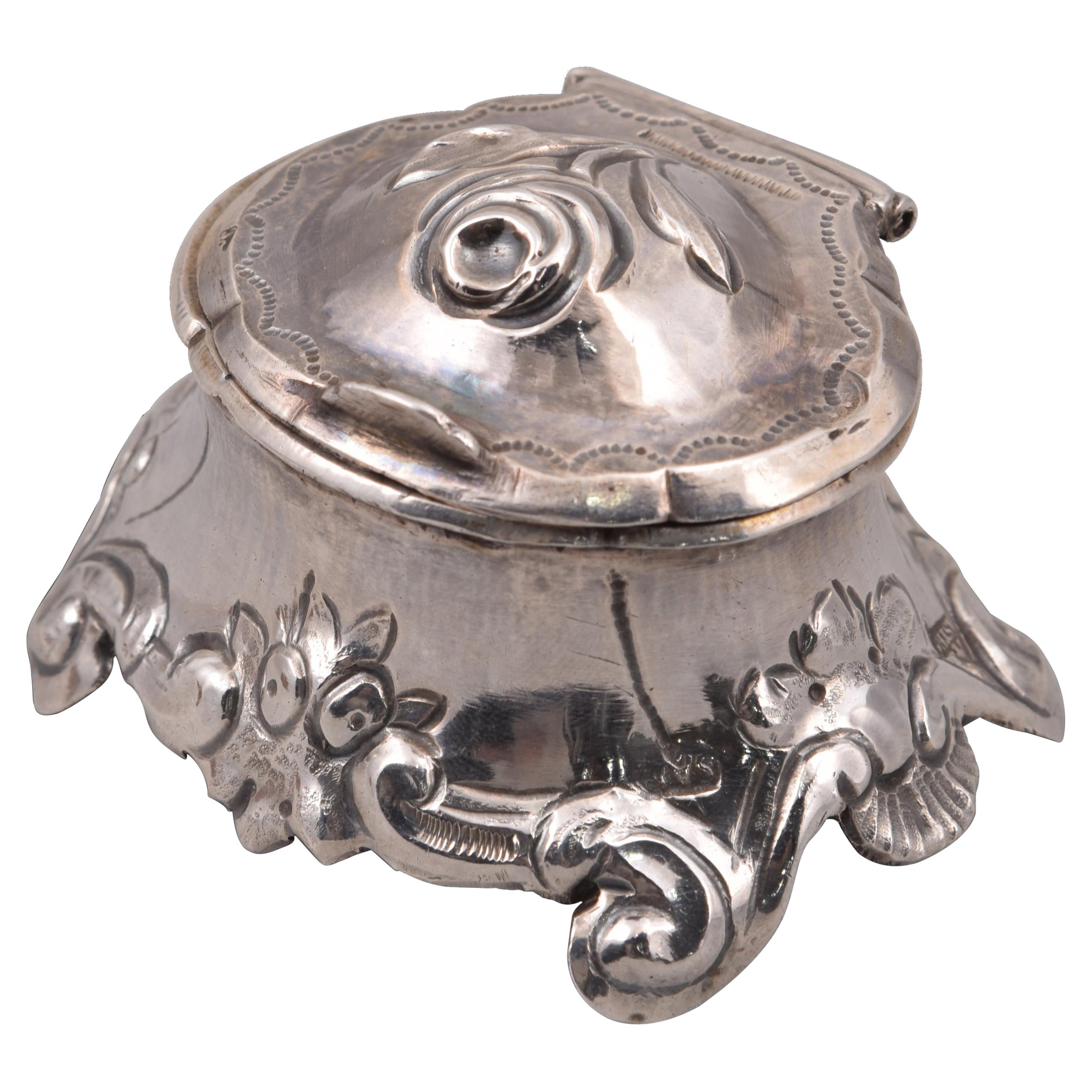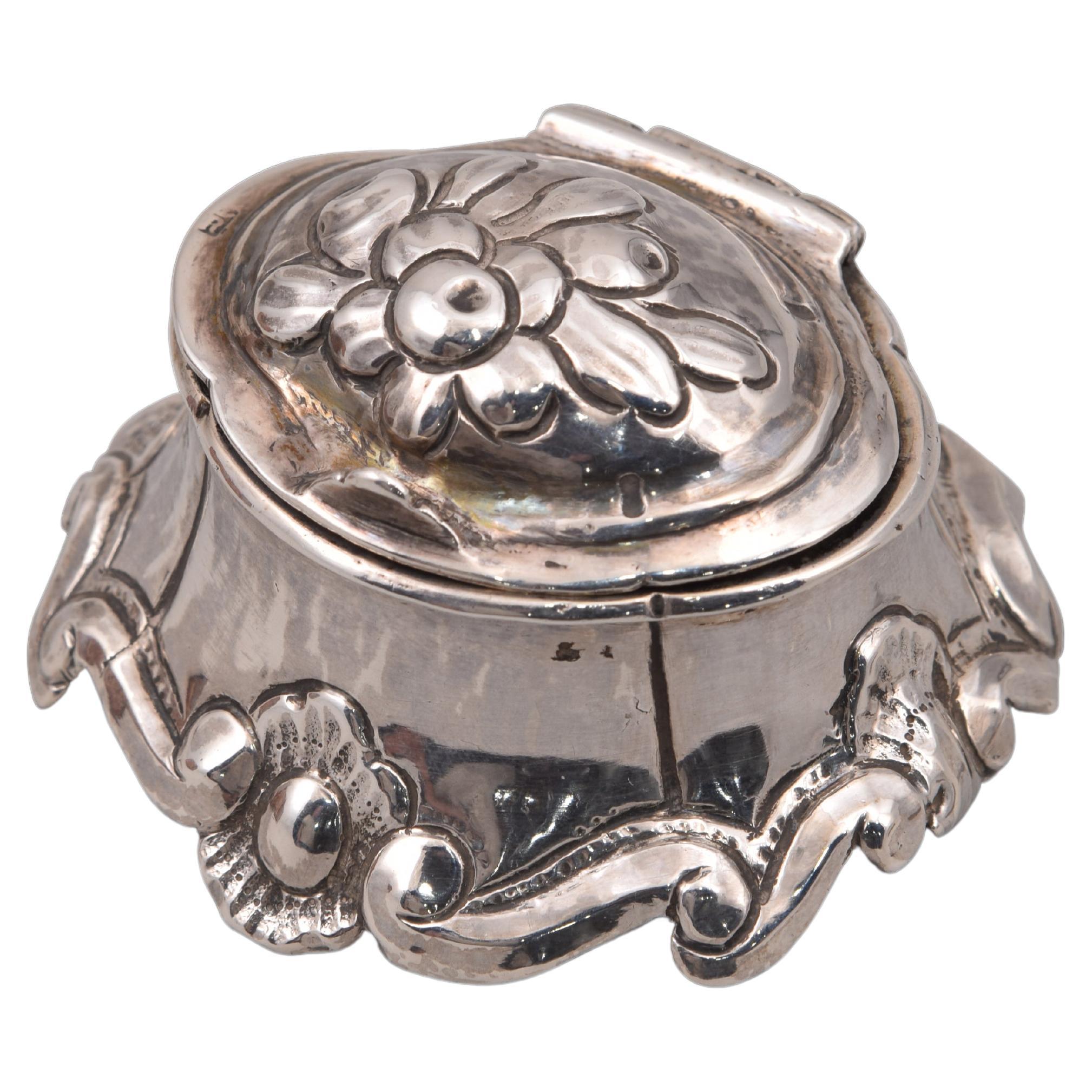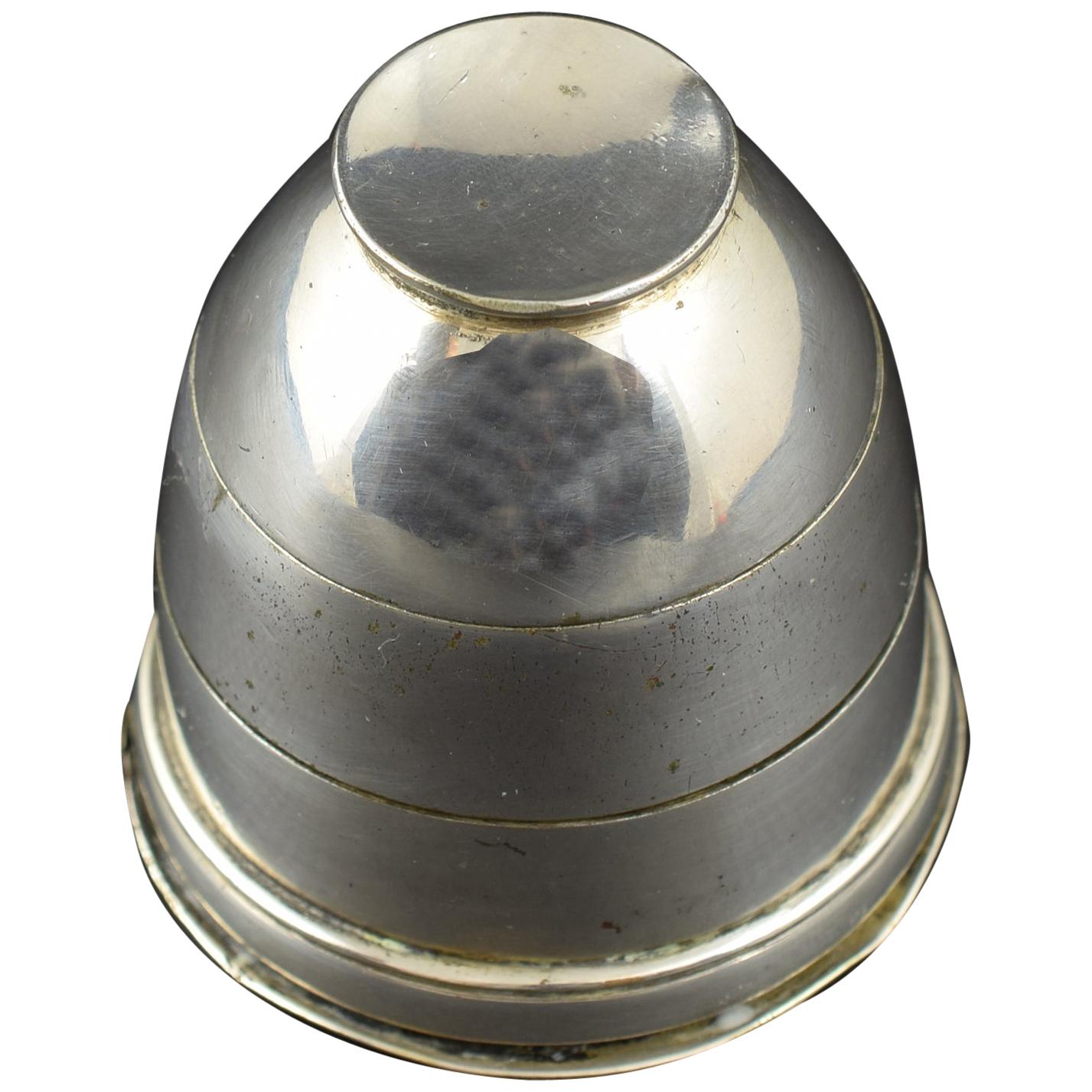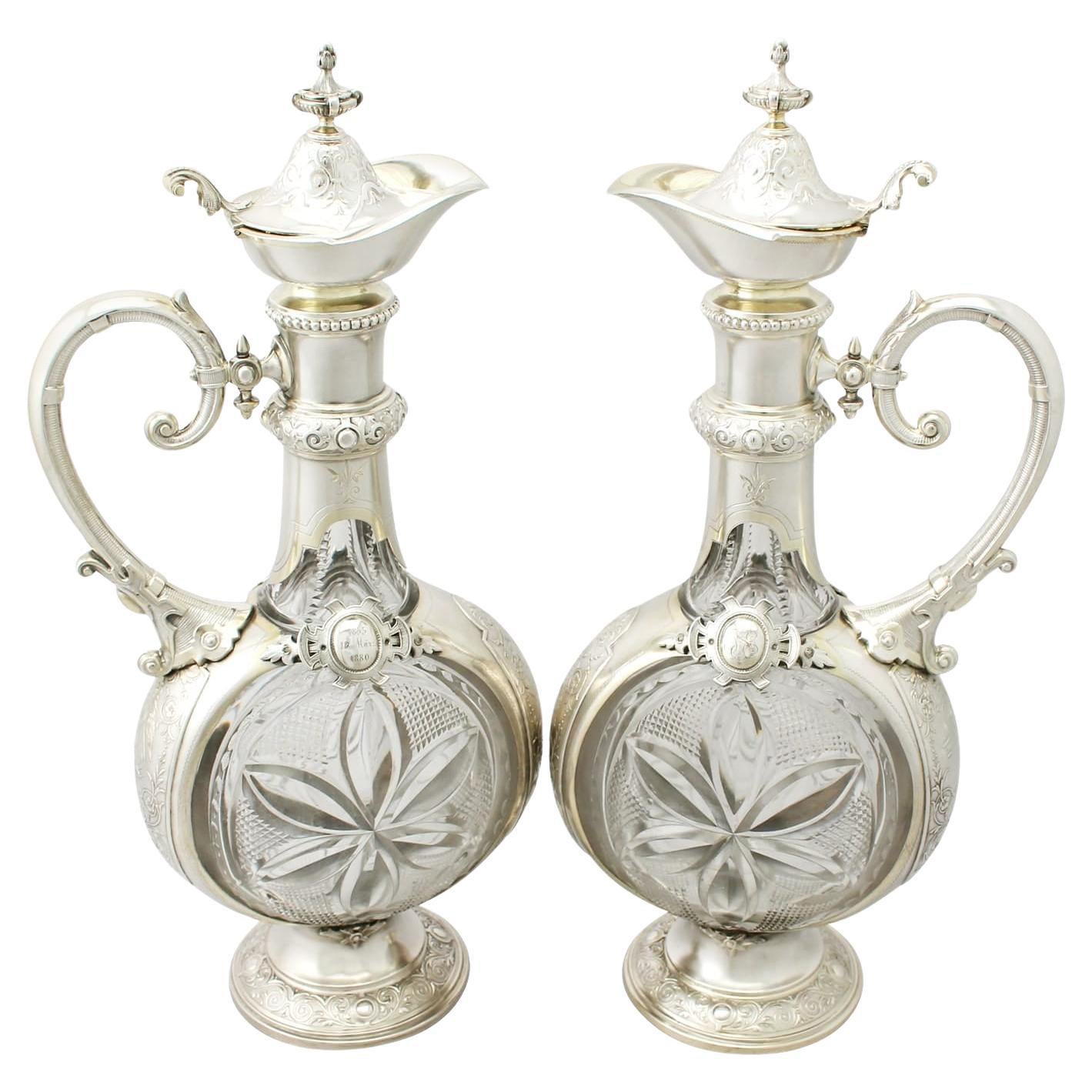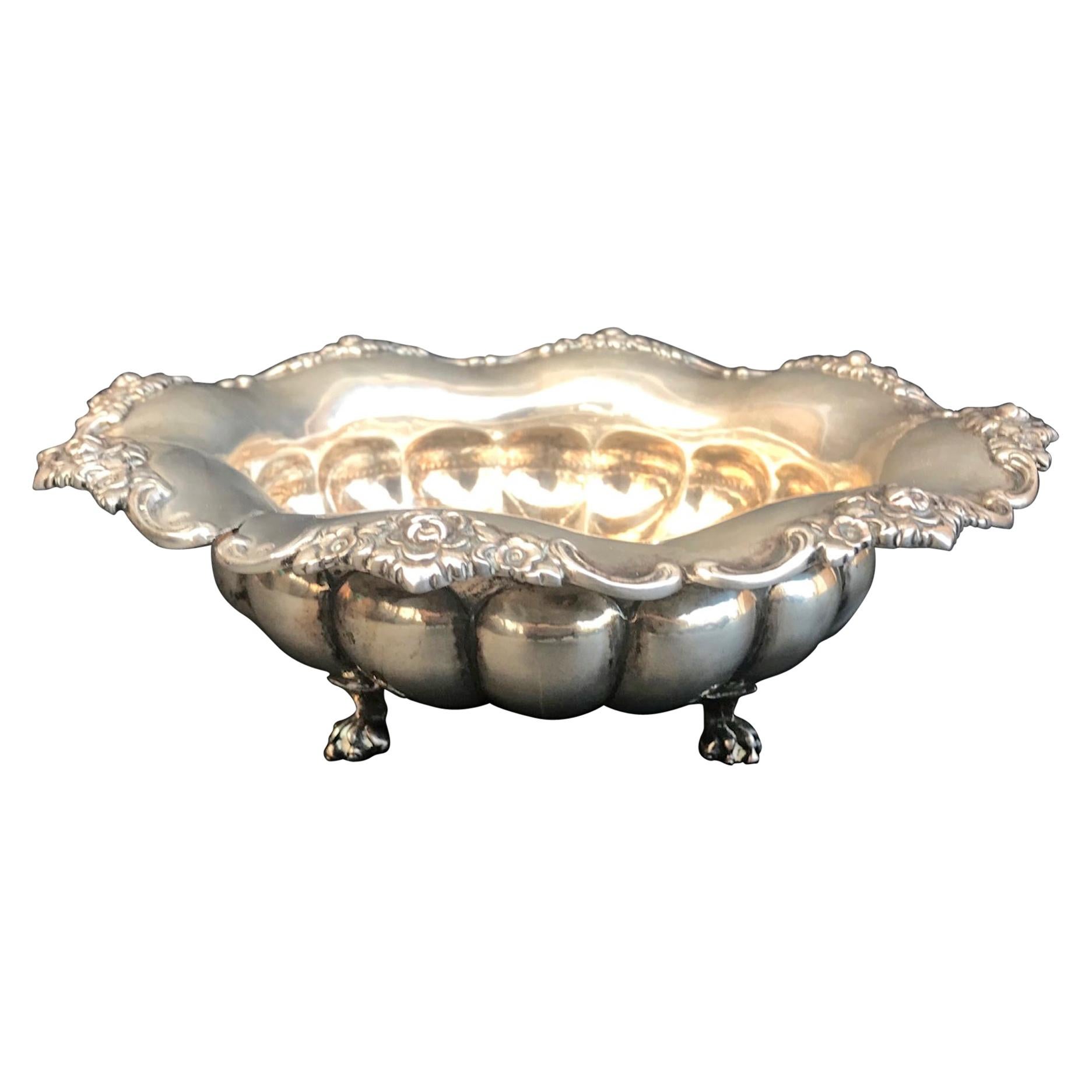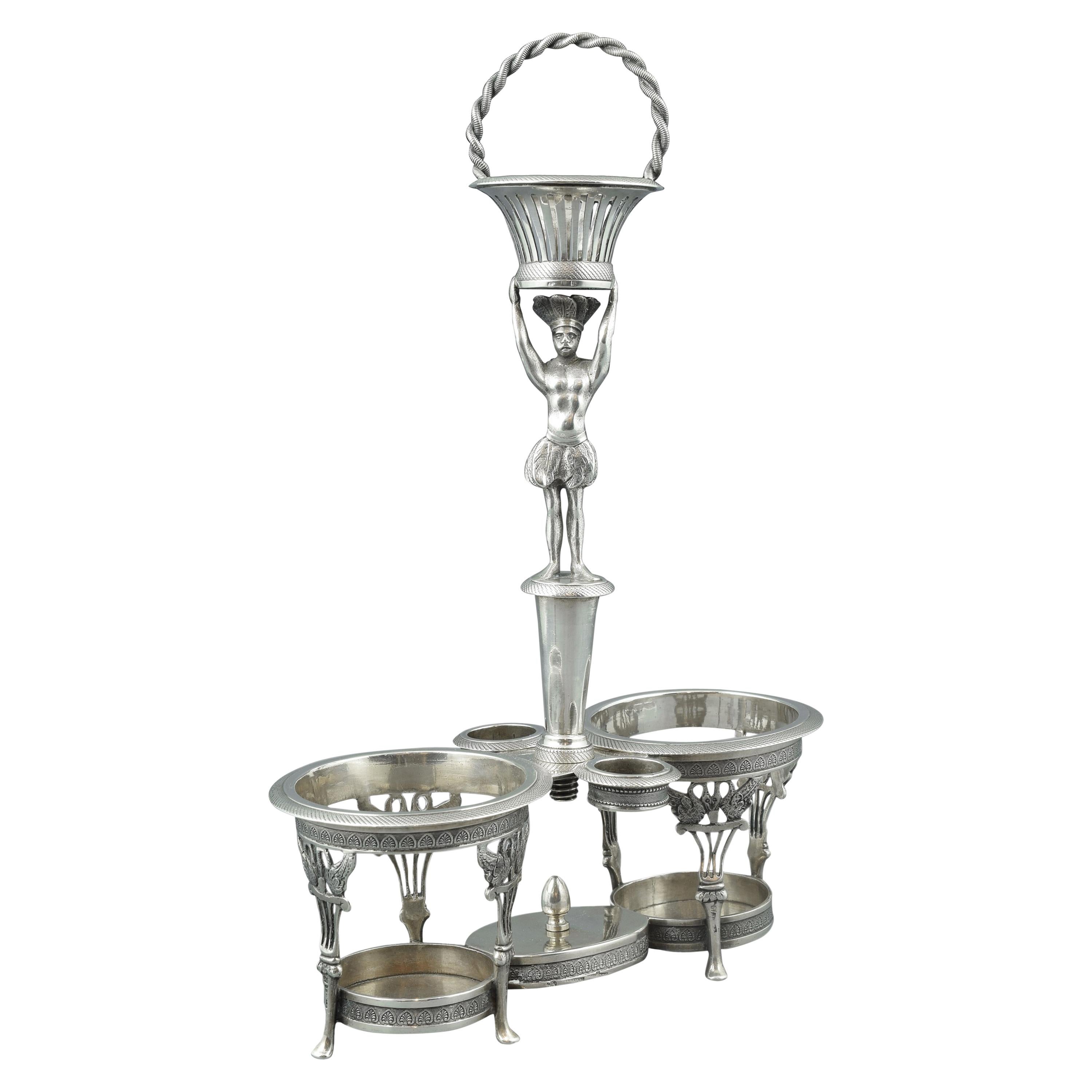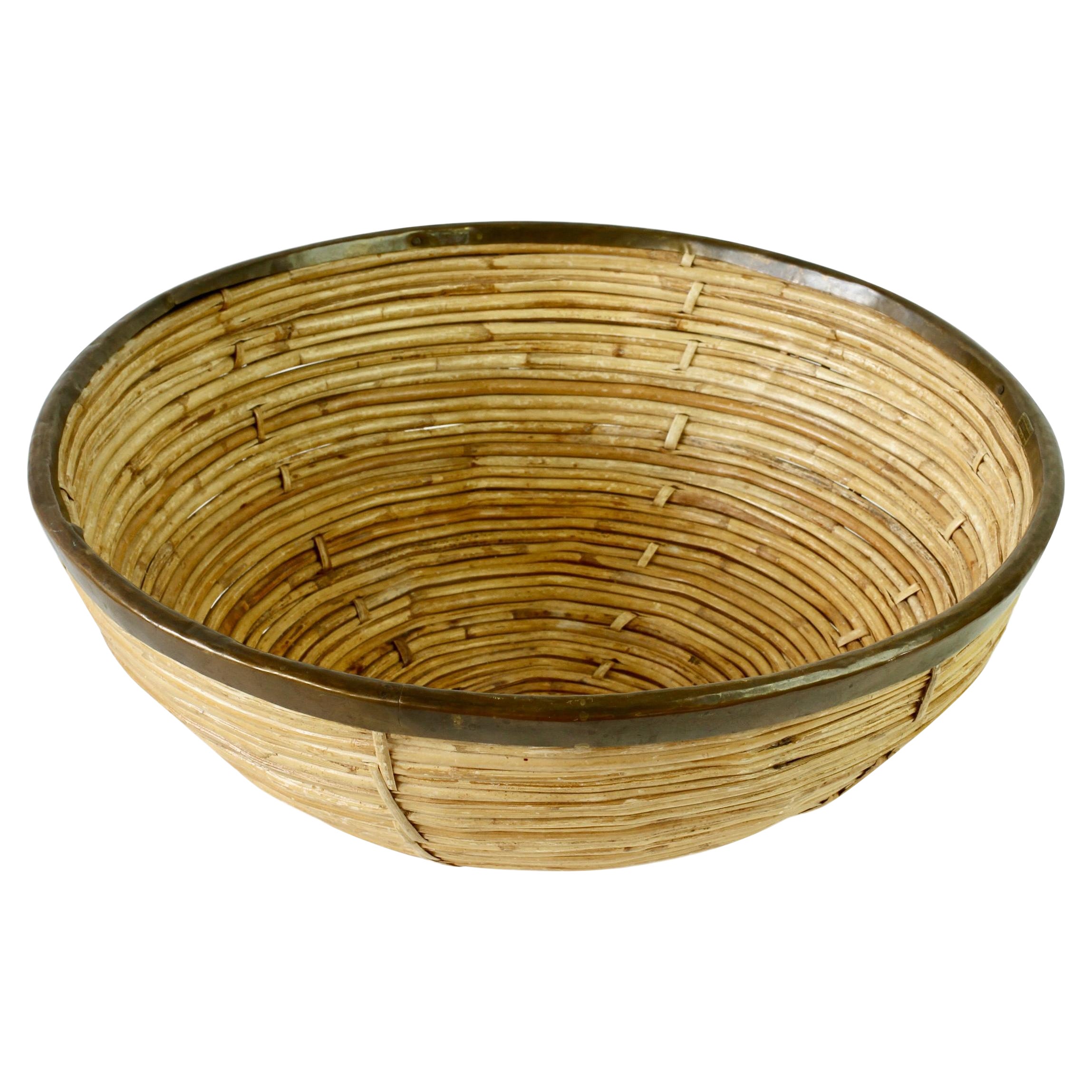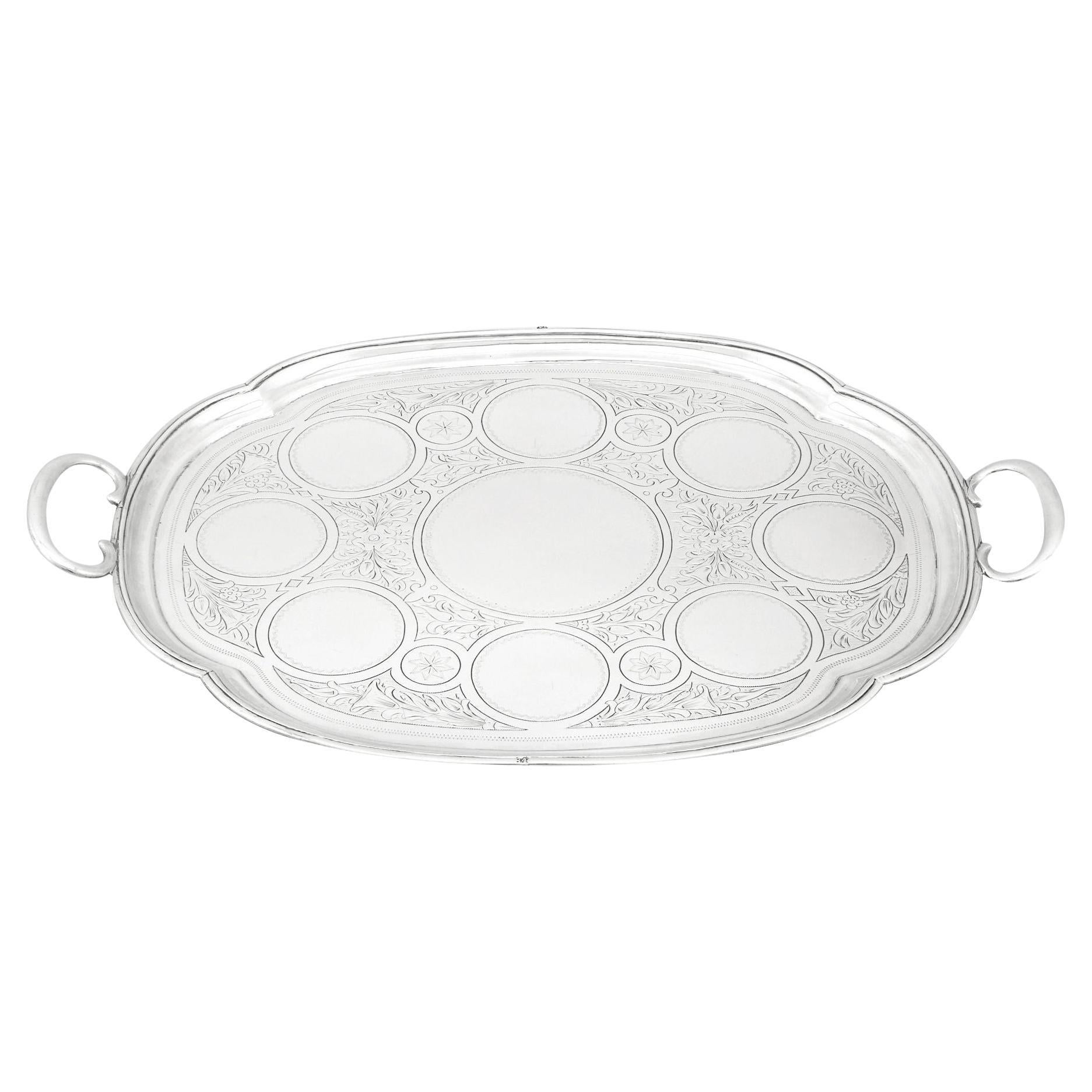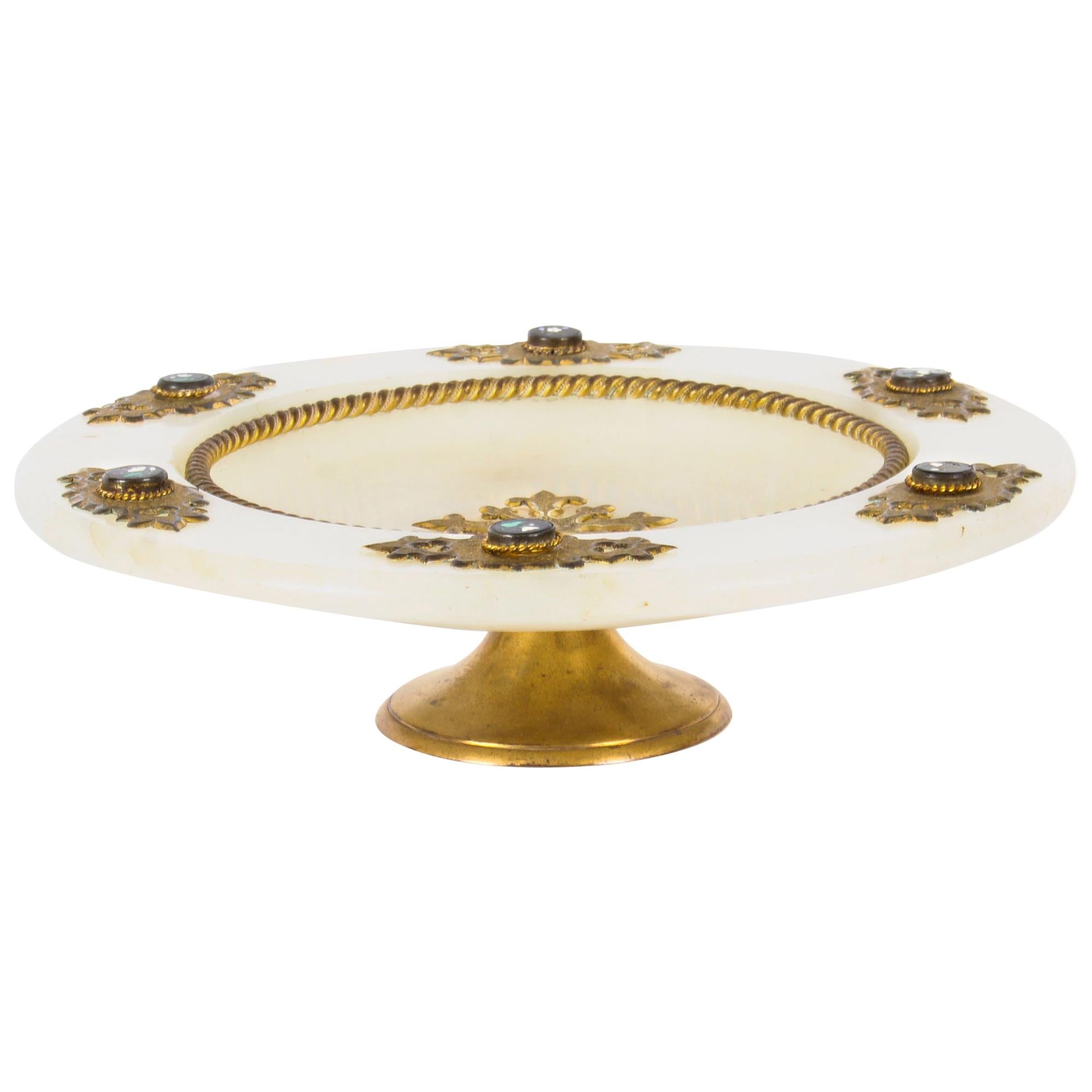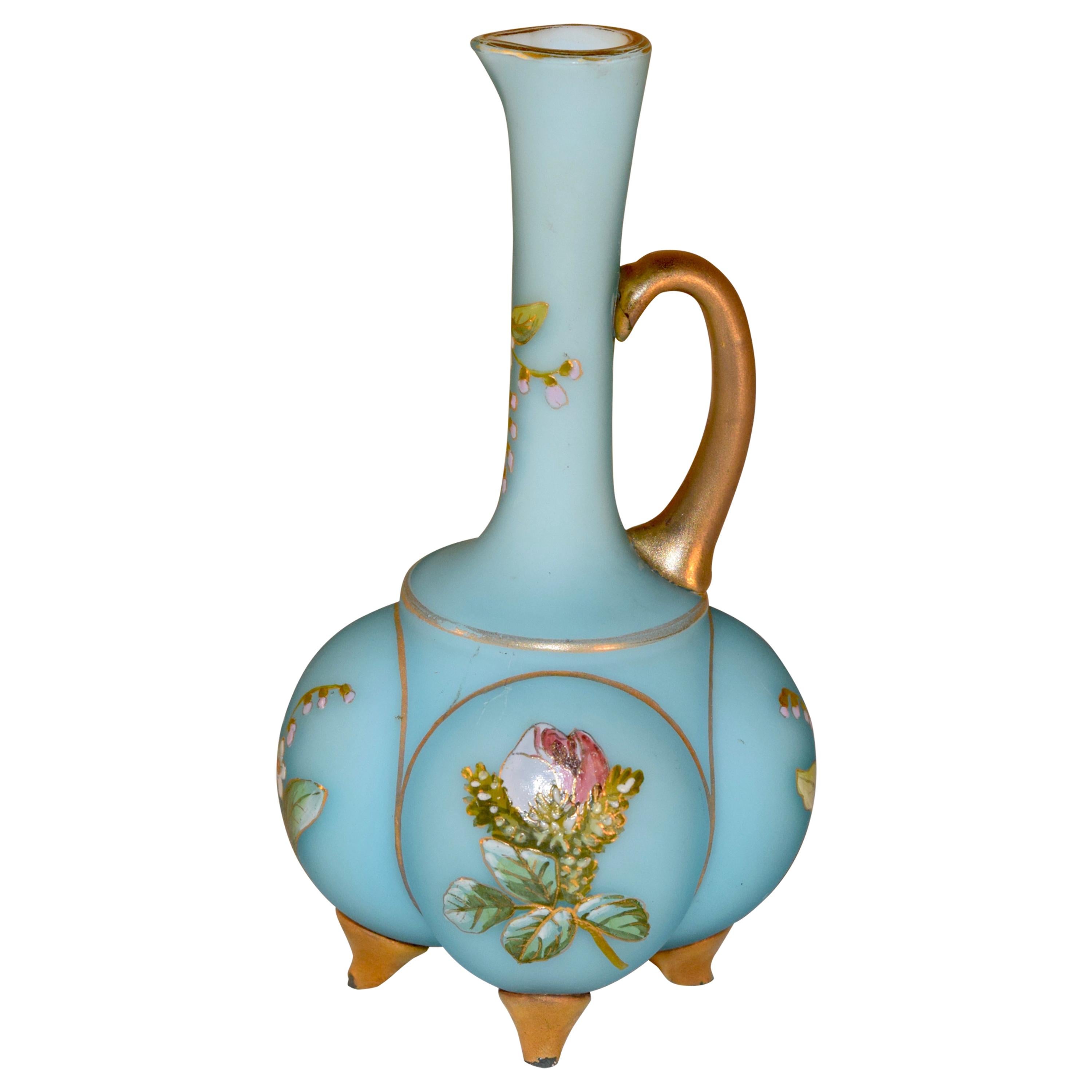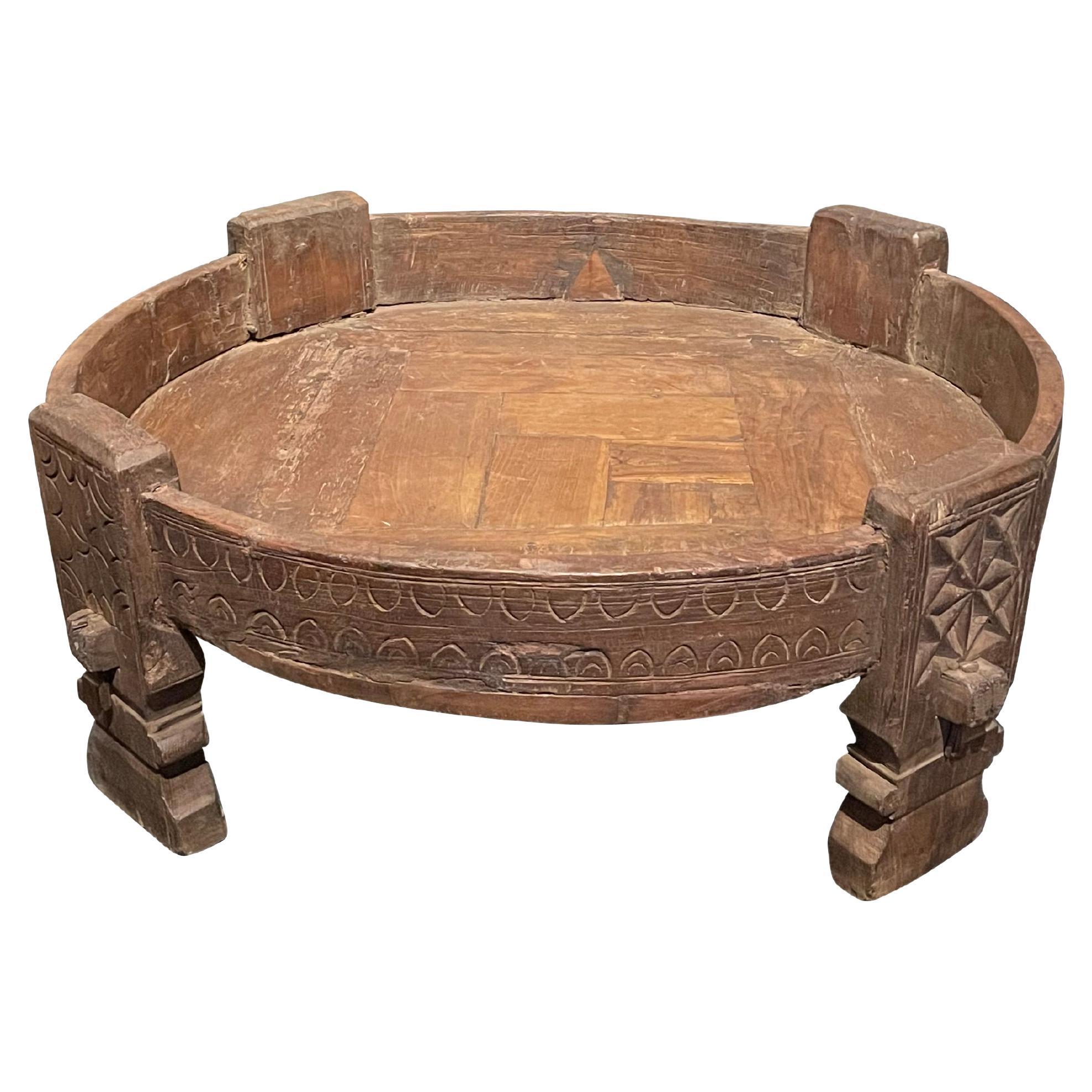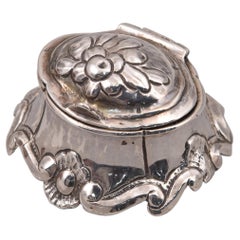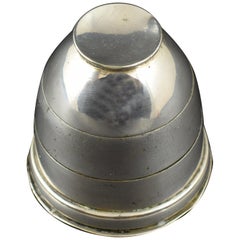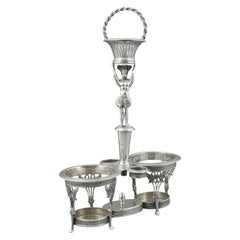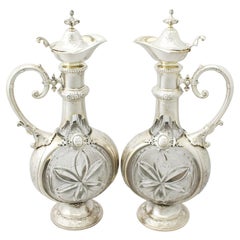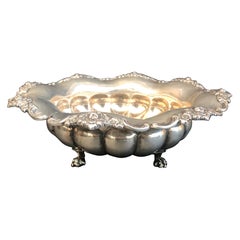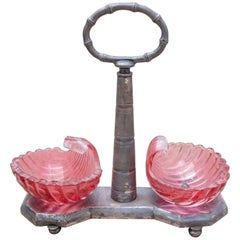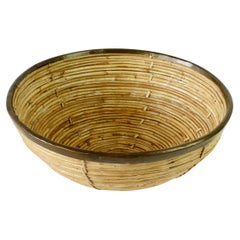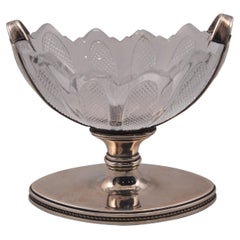
Silver and Glass Spice Dish or Bowl, 19th Century
View Similar Items
Want more images or videos?
Request additional images or videos from the seller
1 of 7
Silver and Glass Spice Dish or Bowl, 19th Century
About the Item
- Dimensions:Height: 3.15 in (8 cm)Width: 3.55 in (9 cm)Depth: 1.97 in (5 cm)
- Style:Neoclassical (In the Style Of)
- Materials and Techniques:
- Place of Origin:
- Period:
- Date of Manufacture:19th Century
- Condition:Wear consistent with age and use. Minor losses. Minor fading.
- Seller Location:Madrid, ES
- Reference Number:Seller: ZF09791stDibs: LU2951329656792
About the Seller
4.9
Vetted Professional Seller
Every seller passes strict standards for authenticity and reliability
Established in 1985
1stDibs seller since 2017
338 sales on 1stDibs
Typical response time: 8 hours
Authenticity Guarantee
In the unlikely event there’s an issue with an item’s authenticity, contact us within 1 year for a full refund. DetailsMoney-Back Guarantee
If your item is not as described, is damaged in transit, or does not arrive, contact us within 7 days for a full refund. Details24-Hour Cancellation
You have a 24-hour grace period in which to reconsider your purchase, with no questions asked.Vetted Professional Sellers
Our world-class sellers must adhere to strict standards for service and quality, maintaining the integrity of our listings.Price-Match Guarantee
If you find that a seller listed the same item for a lower price elsewhere, we’ll match it.Trusted Global Delivery
Our best-in-class carrier network provides specialized shipping options worldwide, including custom delivery.More From This Seller
View AllSilver Spices Dish or Bowl, with Hallmarks, Spain, Córdoba, 18th Century
Located in Madrid, ES
Spice rack. Silver. DE CASTRO, Damian. SANCHEZ SOTO, Juan. Spain, Córdoba, second half of the 18th century.
With contrast markings.
Silver spice rack in its color with a frustoco...
Category
Antique 18th Century Spanish Rococo More Dining and Entertaining
Materials
Silver
Silver spice dish or bowl. DE LUQUE Y LEYVA, Juan. Cordoba, 18th century.
Located in Madrid, ES
Spice rack. Silver. DE LUQUE Y LEYVA, Juan. Cordoba, 18th century.
With contrast markings.
Silver spice rack in its color with a frustoconical body, a sinuous lower edge that rests...
Category
Antique 18th Century Spanish Rococo More Dining and Entertaining
Materials
Silver
Three-Part Silver Salt Shaker or Cellar, 19th Century
Located in Madrid, ES
Three-part silver salt Shaker, 19th century.
Salt Shaker made up of three bodies lowered at their edges so that they fit together and unite in a chamfered half oval at the top, deco...
Category
Antique 19th Century European Neoclassical More Dining and Entertaining
Materials
Silver
Silver Cruet Stand, Santander, Spain, 19th Century
Located in Madrid, ES
With hallmarks (Santander, Trabanco, M.Navarro).
Holding a basket with a handle on its head is the figure of an Indian, with a skirt and headdress. The figure is standing on a colum...
Category
Antique 19th Century Spanish Neoclassical More Dining and Entertaining
Materials
Silver
Silver Cup "Tembladera", 18th Century
Located in Madrid, ES
Without hallmarks.
Silver drinking cup with smooth edges, handles in the shape of a crowned animal (rampant lions with curved tail towards the back) and a decoration at the bottom o...
Category
Antique 18th Century European Neoclassical More Dining and Entertaining
Materials
Silver
Silver Cup "Tembladera", 18th Century
Located in Madrid, ES
Without hallmarks. With property initials.
Container known as catavinos (wine cup) or tembladera with two curved flat handles decorated with simplified plant elements, and a line of...
Category
Antique 18th Century European Neoclassical More Dining and Entertaining
Materials
Silver
You May Also Like
19th Century Antique German Silver and Cut-Glass Claret Jug
Located in Jesmond, Newcastle Upon Tyne
A magnificent, fine and impressive pair of antique German silver and cut glass claret jugs; an addition to our wine and drinks related silverware collection.
These magnificent antique German silver and glass claret jugs have a moon flask shaped form.
The cylindrical necks are encircled with embossed knops, each ornamented with scrolling decoration on a matt background.
The upper bead decorated knop of each jug is surmounted with an impressive boat shaped collar, incorporating a flared lip and fitted with a hinged hallmarked cover.
The covers are further ornamented with embossed decoration to the domed portions, displayed within plain paralleling arabesque shaped borders, accented with impressive single scrolling leaf decorated thumbpieces.
Each cover is surmounted with an exceptional finial featuring fluted and scroll decoration surmounted with swept leaf designs incorporating a ball terminal.
The glass bodies of these antique claret jugs are embellished with fine and impressive, large cut glass floral motifs accented with a textured background to each incurve.
Each glass vessel is enveloped with an impressive 800 standard silver surround incorporating a strapwork bordered cartouche to either side; one displays the contemporary engraved initials 'TSE' and the other bears the German inscription '1855, 18 Marz, 1880'.
The silver surrounds to the jugs are embellished with impressive embossed scenes depicting a nude nymph style character pouring liquid from a bottle into a large chalice, all bordered with interlacing scrolling leaf designs emanating from the upper and lower portions.
These magnificent jugs are fitted with an exceptional, fine and impressive silver ribbed, scrolling handles enveloped with plain handpieces and embellished with further strapwork decoration and incorporating a scrolling leaf decorated thumbpieces.
Each jug is supported by an impressive circular spreading foot encircled with an embossed scrolling leaf ornamentation, matching the style of the knop to the neck.
The subdued matte finish to the 800 standard silver bodies of these impressive jugs are accented with gilt ornamentation to the paralleling borders, enhanced with simplistic bright cut engraved decoration.
The interior of the cover and lipped collar retain the original gilt interior.
Condition
These antique glass claret jugs are an exceptional gauge of silver, exceptional quality and in exceptional condition in keeping with age. The glass body of each jug is in perfect condition. The German silver 800 standard mark struck to the rim of each foot are all very clear.
Dimensions
Length from back of handle to lip 15.5cm/6.1".
Diameter of body 14.5cm/5.7".
Width of body 8.5cm/3.3".
Height to top of finial 36.5cm/14.4".
Maker: Unmarked.
Origin: Germany, Europe.
Date: circa 1880.
Video: A video of this fine piece is available upon request
Reflections in photographs may detract from the true representation of these examples of antique German silverware.
Category
Antique 1880s German Glass
Materials
Silver
19th Century Viennese Heavy Silver Victorian Claw Footed Bowl
Located in Vero Beach, FL
Viennese heavy silver Victorian footed bowl scalloped and embossed, circa 1870
A round, scalloped, flared rim dish boasts an ornately embossed floral design. The heavy body featur...
Category
Antique 19th Century Austrian Victorian Sterling Silver
Materials
Silver
19th Century French Silver Saltcellar with Glass Shells
Located in Marbella, ES
19th Century French silver saltcellar with glass shells.
Category
Antique 19th Century French Sterling Silver
Materials
Silver
1970s Large Vintage Mid-Century Modern Italian Bamboo and Brass Bowl or Dish
Located in Landau an der Isar, Bayern
Large circular Mid-Century Hollywood Regency Crespi style round bowl or dish made in Italy, circa 1970s. Made of weaved / woven rattan / wicker and bamboo with a patinated brass rim ...
Category
Mid-20th Century Italian Hollywood Regency Platters and Serveware
Materials
Brass
19th Century Russian Silver Drinks Tray
Located in Jesmond, Newcastle Upon Tyne
An exceptional, fine and impressive antique Russian silver drinks tray; an addition to our ornamental Russian silverware collection.
This fine antique Russian silver tray has an oval shaped form.
The surface of the drinks tray is embellished with engraved floral and foliate sprays incorporating eight circular vacant cartouches subdivided by rosette designs.
The ornamentation to the tray encompasses a large vacant circular cartouche.
The raised rounded border is ornamented with applied moulded decoration to the rim.
This impressive Russian silver tray is fitted with a plain rounded hallmarked handle to either end.
The hallmarks struck to the underside of this tray include:
Maker's mark: ?.?.? (untraced)
Assay mark: A.C , 1871
Silver quality/purity mark: 84 (84 zolotniks)
City mark: St George slaying the dragon (Moscow, Russia)
This assayer could be either Aggey Grigoryevich Svechin or Aleksandr Alekseyevich Smirnov
84 zolotniki is equivalent to 875/1000 or .875 standard silver
Condition
This antique tray is a very good gauge of silver, excellent quality and in exceptional condition in keeping with age. The engraved ornamentation is all very crisp. The Russian silver hallmarks...
Category
Antique 19th Century Russian Serving Pieces
Materials
Silver
Italian Pietra Dura Mounted Brass and Alabaster Comport Dish, 19th Century
Located in London, GB
This is a superb quality antique Italian Pietra Dura mounted, gilt brass and alabaster table-centre comport dish, dating from the late 19th century.
With striking pierced Neo-Gothic chased brass mounts this splendid alabaster dish is set with six highly decorative pietra dura roundels depicting various floral decoration.
It is raised on a sturdy circular brass base.
It is a sumptuous piece which will make a great statement in any special room.
Condition:
In really excellent condition, please see photos for confirmation.
Dimensions in cm:
Height 8 x width 29 x depth 29
Dimensions in inches:
Height 3.1 x width 11.4 x depth 11.4
Pietra Dura is a term for the inlay technique of using cut and fitted, highly polished colored stones to create images. It is considered a decorative art.
Pietre dure is an Italian plural meaning "hard rocks" or hardstones; the singular pietra dura is also encountered in Italian. In Italian, but not in English, the term embraces all gem engraving and hardstone carving, which is the artistic carving of three-dimensional objects in semi-precious stone, normally from a single piece, for example in Chinese jade.
The traditional convention in English has been to use the singular pietra dura just to denote multi-colored inlay work. However, in recent years there has been a trend to use pietre dure as a term for the same thing, but not for all of the techniques it covers, in Italian.
But the title of a 2008 exhibition at the Metropolitan Museum of Art, New York, Art of the Royal Court: Treasures in Pietre Dure from the Palaces of Europe used the full Italian sense of the term, probably because they thought that it had greater brand recognition. The material on the website speaks of objects such as a vase in lapis lazuli as being examples of "hardstone carving (pietre dure)"
The Victoria & Albert Museum in London uses both versions on its website, but uses pietra dura. "A method of inlaying colored marbles or semi-precious stones into a stone base, often in geometric or flower patterns...."
Giovanni Montelatici...
Category
Antique 1890s Italian More Dining and Entertaining
Materials
Alabaster, Brass
Recently Viewed
View AllMore Ways To Browse
Maurice Prendergast
Mauser Rundform
Mauthe Mantel Clock
Max Schnitzler
Max Shaye
Maxalto Side Table
Maxie Lane
Maximilian Karp
Maximilian Wiedemann
Mayflower Ship
Mccobb Cigarette
Mccoy Mixing Bowls
Mcguire Queen Bed
Mcintosh Dining Table Chairs Mid Century Retro
Mcintosh Table And Chairs
Mckinnon Furniture
Mcm Bachelors Chest
Mcm Brutalist Jewelry
